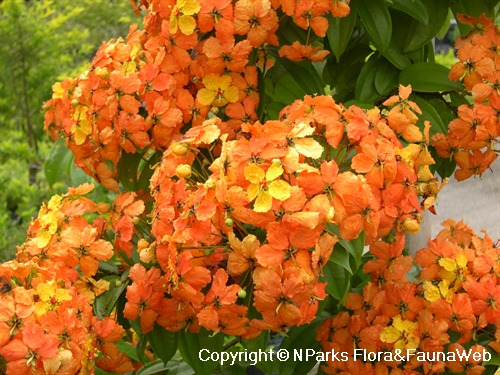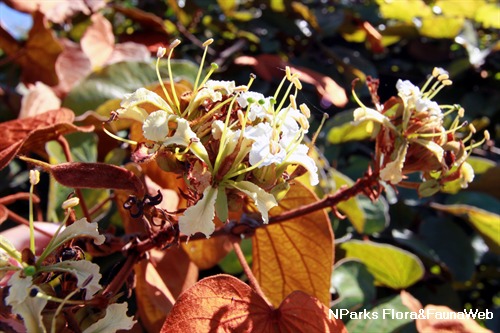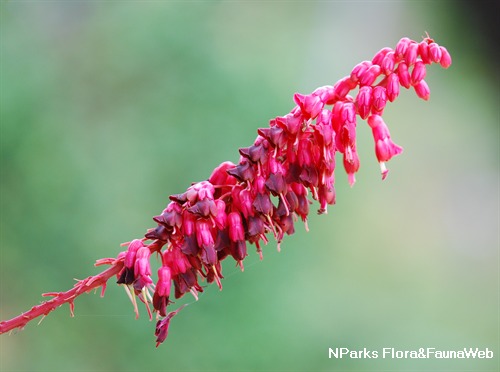
Back
Phanera strychnifolia (Craib) K.W.Jiang, S.R.Gu & T.Y.Tu
| Family Name: | Fabaceae (Leguminosae) |
| Synonyms: | Bauhinia strychnifolia Craib |
Name
Classifications and Characteristics
| Plant Division | Angiosperms (Flowering Seed Plants) (Dicotyledon) |
|---|---|
| Plant Growth Form | Climber |
| Lifespan (in Singapore) | Perennial |
| Mode of Nutrition | Autotrophic |
Biogeography
| Native Distribution | North Thailand |
|---|---|
| Native Habitat | Terrestrial |
| Local Conservation Status | Non-native (Horticultural / Cultivated Only) |
Description and Ethnobotany
| Growth Form | A climber, it climbs by means of tendrils and can grow up to 5 m in height. |
|---|---|
| Foliage | The leaves are simple, arranged alternately along the stem and ovate-oblong in shape with a rounded or cordate base. The young leaves are pink, turning green as it matures. |
| Flowers | Flowers are borne on terminal racemes up to 100 cm long. The flower calyx is pale pink to red, 5 lobed. The petals are obovate in shape and pubescent and range in colour from red to dark red. Each flower has 3 stamens and 1 stigma. |
| Ethnobotanical Uses | Food (Herb or Spice): A decoction of the leaves is drunk to neutralise the toxins from ingested bad food. |
Landscaping Features
| Desirable Plant Features | Ornamental Flowers |
|---|---|
| Landscape Uses | Parks & Gardens, Trellis / Arbour / Pergola |
Plant Care and Propagation
| Light Preference | Full Sun |
|---|---|
| Water Preference | Moderate Water |
| Plant Growth Rate | Moderate |
| Propagation Method | Seed |
Floral (Angiosperm)
| Flower & Plant Sexuality | Bisexual Flowers |
| Flower Colour(s) | Pink, Red |
|---|---|
| Flower Grouping | Cluster / Inflorescence |
| Flower Location | Terminal |
| Flower Symmetry | Bilateral |
| Inflorescence Type | Raceme |
Image Repository
Others
| Master ID | 32097 |
|---|---|
| Species ID | 6503 |
| Flora Disclaimer | The information in this website has been compiled from reliable sources, such as reference works on medicinal plants. It is not a substitute for medical advice or treatment and NParks does not purport to provide any medical advice. Readers should always consult his/her physician before using or consuming a plant for medicinal purposes. |

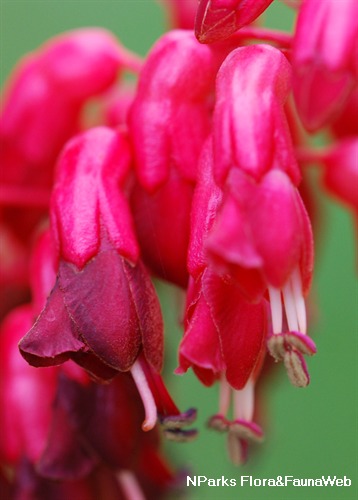
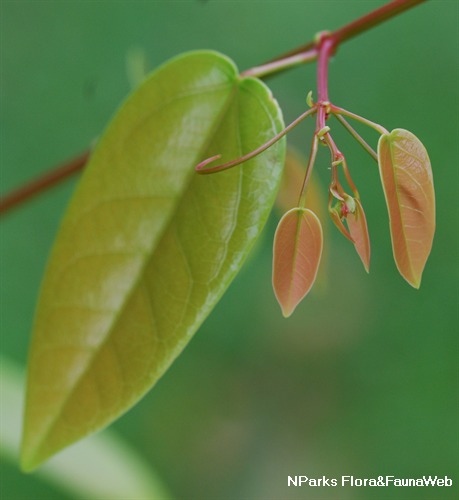
.jpg)

